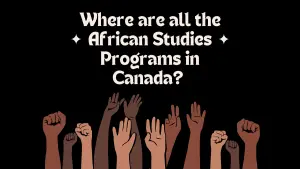Sociology never stops amusing a person when it comes to the vastness of its applicability. Seemingly a theory-oriented discipline, sociology inherently knows how to connect with others—whether it’s interpersonal human relationships or an interdisciplinary study. Such as a relationship between applied sociology and psychosocial development.
As a major in sociology, my research interests include psychosocial development through resilience-building for which a multi-systemic approach can be implemented to augment the impact. This article will shed some light on psychosocial development as a niche in the development sector—helping us to understand the potential of what sociology can do in practice; how the three pillars of positive psychology supports the idea of systemic intervention by sociologists; and, how sociologists can contribute in positive youth development through the concepts of resilience in multiple systems.
‘Psychosocial Development’ in the Development Sector
When we talk about the ‘development sector’ it includes various development areas, but our major concern is to make fresh graduates in Sociology familiar with this term i.e. psychosocial development.
While psychological development is focused on the well-being of individual thought and behavior, psychosocial development addresses the intrapersonal level problems in relation to external social factors: How the behavioral issues and cognitive distortions are created by the individual’s social factors and how the behavior and cognition of that person can impact their atmosphere. However, this is not only limited to the micro-level of society. Rather, it can potentially encompass all levels.
The Three Pillars of Positive Psychology & Multi-Systemic Intervention
Remember the three pillars of Positive Psychology:
- positive individual,
- positive relationships, and
- positive institutions!
For a sociologist to intervene, the relationships and institutions are our forte. The interrelationship between these three pillars is very clear. Without one we cannot expect the positive development of the other. For example, to ensure positive individual development, they need positive relationships around them, and to maintain these relationships, more positive individuals are required. This positive environment or external/social factors can be maintained by positive institutions.
Positive institutions, as defined by Seligman and Csikszentmihalyi (2000), are those institutions that instill responsibility, altruism, civility, tolerance, citizenship, etc. in their groups of individuals. This kind of interrelationship supports multi-systemic intervention. Whichever end we start to work from—the institution, the personal, or the interpersonal level—this interrelationship is like an apparatus that has to be managed well to cater to psychosocial development on the complete scale. Lack of positive change and adaptability at any level may cause the other to suffer.
Positive Youth Development & Resilience – An Example
To give an example of the aforementioned interrelationship and the approach to intervention, I will highlight the Positive Youth Development PYD (a psychosocial aspect to youth development) as a niche in the development sector that is gaining importance rapidly. PYD not only focuses on the psychological well-being of youth, but the structures and systems governing them, as well.
These structures and systems are termed as the “support systems”—i.e., the interpersonal relationships, family they live with, community they live in, schools they go to, workplaces they work in, peers and colleagues they study and/or work with, etc. In short, this works like an apparatus that I discussed in the previous paragraph and can either make or break an individual. While a clinical psychologist focuses on the psychological well-being of an individual, there has to be an intervention at macro and meso-level of the society (for the sake of the individual).
While psychologists’ work is limited to individuals, we need sociologists to work with the individual’s surrounding support systems.
Positive Youth Development
In Positive Youth Development, there is a factor involved called resilience-building. Resilience can be useful in the sustenance of positive development of an individual as well as their support systems. The support systems can be categorized in two parts: “internal or individual assets” and “external or environmental resources.”
Examples of individual assets are empathy, problem-solving, and decision-making, while family support and meaningful participation, prosocial peers, community support, and meaningful participation are counted as environmental resources. An individual can make use of any of these. Even if one is missing or causing a negative impact to the wellbeing of the individual, the other can be a rescuer.
From a sociological perspective, I see the individual assets as being either formed or diminished by the environmental factors. How to turn these environmental factors into resources that create positive individuals in the society is the concern of a sociologist.
So, what can sociologists do in Psychosocial Development?
To wrap it up, sociologists can work on improving both the mental and social health of the society and its individuals, simultaneously through the psychosocial approach to development. By providing insight into the individual and their environmental resources, we can contribute to the work of mental health practitioners, policy-makers, clinicians, and more for reforms.
The multi-system analysis can also help sociologists identify the risk factors that are becoming a hurdle in the positive development, for which we can plan preventive interventions at the family, school, workplace, and/or community level on time to control the impact these risk factors can create. Hence, we need clinical sociologists to be hired in schools and workplaces for individual social counselling that can determine their needs and work on their environment to connect them with their environmental resources, and use appropriate therapies to address any behavioral problems, risk behaviors, or negative mental health outcomes.
Final Thoughts on Sociology and Psychosocial Development
In order to obtain the smooth functioning of the apparatus that is the interrelationship of the three pillars of positive psychology, systemic interventions like family and group therapy should be normalized. Intervention for community and organizational development can be in the form of improved infrastructure, deviance reduction, resource allocation, needs-assessment, economic stability, sustainability, maintaining social and psychological wellbeing, etc.
Engagement in activities like volunteering or joining societies in your community can again account for meaningful participation for the sake of positive growth. A plus through this engagement will be that we can connect with more positive individuals, hence, positive relationships. A macro-level intervention is required to create positive institutions functioning for the betterment of the society and its members as a whole.
For psychosocial development we have to identify the psychosocial adversities present in the society as well, within all the systems. Sociologists are trained through theory and practice to figure out the relationships between different levels of analysis. The multi-systemic approach to intervention is well-suited for sociologists looking to specialize in Clinical Sociology and those who are interested in ‘social behavior’ and the ‘behaving systems.’








